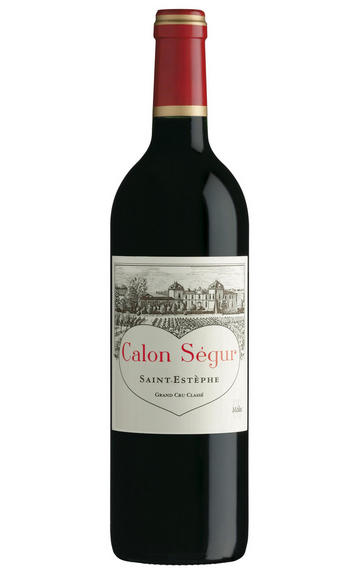
2005 Château Calon Ségur, St Estèphe, Bordeaux
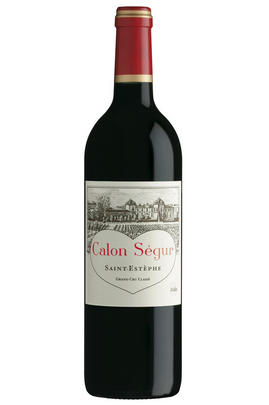
Critics reviews
Drink 2016 - 2040
Jancis Robinson, jancisrobinson.com (Mar 2017)
Tasted from an ex-chteau bottle at BI Wine & Spirits Calon-Segur dinner in London, the 2005 Calon Segur is on par with the wonderful 2000. The only real difference is that this needs more time in bottle. It has a captivating nose: blackberry and boysenberry fruit coming at you at full pelt; dried blood and bacon fat developing as secondary aromas just behind. There is fine delineation here - an underlying mineralit sure to surface with time. The palate is very intense and disarmingly youthful, almost ferrous on the entry with layers of ripe black fruit that segue into an earthy finish (with a curious light tang of Marmite on the aftertaste!). It is a fabulous Calon Sgur, though the millennial wine might ultimately possess greater precision. We will see. Tasted March 2015.
Neal Martin, Wine Advocate (Oct 2016)
James Suckling, jamessuckling (Nov 2015)
93/100 Robert Parker eRobertParker.com #219 Jun 2015
A blend of 60% Cabernet Sauvignon and 40% Merlot, the totally closed 2005 Calon Segur is one of those traditionally made, backstrapping, uncompromising Bordeaux that will last 30-40 or more years. Its dense ruby color with purple nuances is followed by a nose that reluctantly offers up scents of damp earth, wood smoke, black cherries, cassis, and an exotic Asian spice character. The wine is formidably endowed and broodingly tannic, with noticeable acidity and a structured, nearly impenetrable mouthfeel. Nevertheless, it is easy to sense the weight, extract, and richness in this pure, deep wine.
92+/100 Robert Parker - Wine Advocate - Apr-2008
Drink 2021 - 2040
Charles Curtis MW, Decanter.com (Jun 2021)
About this WINE
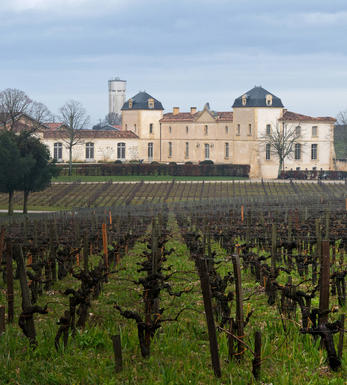
Chateau Calon Segur
Château Calon-Ségur, the most northerly of all the Médoc Grand-Crus Classés, is the château with a heart on its label. That is because the former owner, Marquis de Ségur, though he owned such Estates as Lafite and Latour, he declared "My heart belongs to Calon". For the last century it has been owned by the Gasqueton family.
Calon-Ségur's 74-hectare vineyard, which is partly enclosed by a wall, is located just to the north of the village of St-Estèphe. The vineyards (Cabernet Sauvignon 65%, Merlot 20%, Cabernet Franc 15%) lie on up to 5 metre deep gravel beds mixed with sand and, in parts, limestone and clay.
The wines are fermented for 3 weeks in enamel-lined steel vats and are then matured in oak barriques (40% new) for 18 months. Recently, Calon-Ségur has hit form with notable successes in 1995 and 1996 and 2000. At its best, Calon-Ségur produces meaty and concentrated wines displaying excellent depth of fruit and superb length. It is classified as a 3ème Cru Classé.
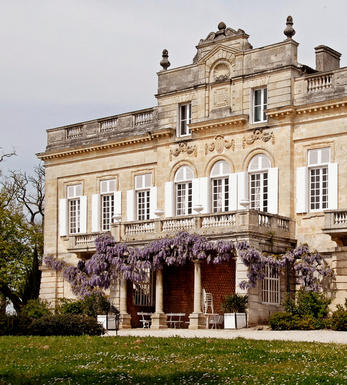
Saint-Estèphe
Saint-Estèphe is the northernmost of the most important communes of the Médoc and borders Pauillac on its southernmost border, with only a gully and stream separates it from Ch. Lafite. To the north lies the Bas-Médoc.
Saint-Estèphe is defined by the depth of its gravel, which is ubiquitous but of varying depths and occasionally very shallow, when clay predominates. This keeps the soil cooler and wetter than its counterparts so that the wines can appear fresh in lighter vintages, but superbly successful in hot, dry years.
The best châteaux in the south of the commune have the deepest soil and the thickest gravel. Cos d'Estournel has an exceptional terroir with its vineyards being located on a south-facing ridge of gravel with excellent drainage.
Saint-Estèphe is the least gravelly of main Médoc communes and in the north of the commune the vineyards are heavier and more clay-based leading to a rustic style of wine being produced.
The wines can appear austere in youth with a discernable ferric note at some châteaux, but the best typically display good depth of colour, pronounced acidity an tannins in youth and are exceptionally long-lived. At their best, they are the equal of almost any Bordeaux. The well-regarded St Estèphe co-operative controls the production of about half the appellation.
Recommended Châteaux
Cos (Ch. Cos d'Estournel), Ch. Montrose, Ch. Calon-Ségur, Ch. Lafon-Rochet, Ch. Les Ormes de Pez, Ch. Beau-Site, Ch. Cos Labory, Ch. Phélan-Ségur
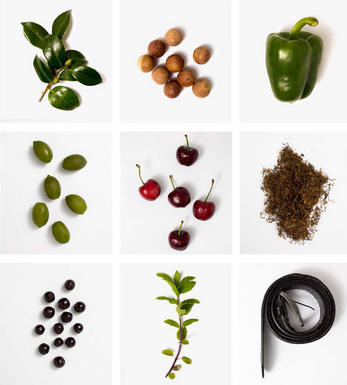
Cabernet Sauvignon Blend
Cabernet Sauvignon lends itself particularly well in blends with Merlot. This is actually the archetypal Bordeaux blend, though in different proportions in the sub-regions and sometimes topped up with Cabernet Franc, Malbec, and Petit Verdot.
In the Médoc and Graves the percentage of Cabernet Sauvignon in the blend can range from 95% (Mouton-Rothschild) to as low as 40%. It is particularly suited to the dry, warm, free- draining, gravel-rich soils and is responsible for the redolent cassis characteristics as well as the depth of colour, tannic structure and pronounced acidity of Médoc wines. However 100% Cabernet Sauvignon wines can be slightly hollow-tasting in the middle palate and Merlot with its generous, fleshy fruit flavours acts as a perfect foil by filling in this cavity.
In St-Emilion and Pomerol, the blends are Merlot dominated as Cabernet Sauvignon can struggle to ripen there - when it is included, it adds structure and body to the wine. Sassicaia is the most famous Bordeaux blend in Italy and has spawned many imitations, whereby the blend is now firmly established in the New World and particularly in California and Australia.


Buying options
Add to wishlist
Description
Tasted blind. Blackish crimson. Sweet, well developed nose. Lots of fruit concentration in the middle. Pretty classy stuff. Lovely full ripe fruit fully covers the tannin. Just very slightly bitter on the end.
Drink 2016 - 2040
Jancis Robinson, jancisrobinson.com (Mar 2017)
wine at a glance
Delivery and quality guarantee